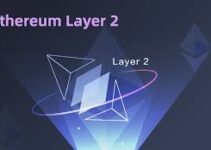The transition of Ethereum to proof-of-stake (PoS) in 2022 marked a pivotal moment in the blockchain space. The subsequent Shapella upgrade in April 2023 allowed for the withdrawal of staked ETH, leading to a substantial growth in staking activities on the Ethereum blockchain. Alongside this surge, a burgeoning trend has emerged in the form of Liquid Staking Derivatives (LSDs) or, alternatively, Liquid Staking Tokens (LSTs). This article delves into the world of Liquid Staking Derivatives in decentralized finance (LSDFi), exploring their background, the broader market ecosystem, and associated risks.

Background of LSDs and the Growth of Staking
LSDs have become a focal point in the blockchain narrative in 2023, experiencing a rapid acceleration in total ETH staked throughout the year. As of October 2023, liquid staking stands out as the largest category on the DeFiLlama aggregator, boasting a combined Total Value Locked (TVL) of $23.02 billion across 119 protocols. It’s noteworthy that the data presented here reflects information up to June 16, 2023, and the total staked ETH has since surpassed 27.2 million as of October 2, 2023.
Liquid staking providers play a crucial role in this landscape by issuing their own LSDs, thereby unlocking additional liquidity and enabling holders to explore a broader range of opportunities within the crypto ecosystem. The primary advantage of these protocols lies in their ability to democratize staking, allowing more users to participate in the larger crypto ecosystem with lower entry barriers.
State of LSDFi
LSDFi, short for Liquid Staking Derivatives in decentralized finance, refers to DeFi protocols built on top of LSDs. These protocols offer holders additional avenues to generate yield, further expanding the possibilities within the staking landscape. By leveraging LSDs, LSDFi protocols provide users with a seamless and accessible means to participate in staking activities.
Examining the Landscape
Lido emerges as a dominant player in the overall ETH staking landscape, leading the pack in terms of total staked ETH. Following closely are centralized exchanges such as Coinbase, Binance, and Kraken, which have also made significant strides in facilitating staking for their users. Additionally, various other liquid staking providers contribute to the ecosystem, albeit representing a smaller fraction of the total staked ETH.
Risks Associated with LSDFi
While the LSDFi space presents exciting opportunities, it is essential to address the associated risks. The inherent nature of decentralized finance involves risks related to smart contract vulnerabilities, market volatility, and protocol governance. Users should exercise caution and conduct thorough due diligence when engaging with LSDFi protocols to mitigate potential risks.
Conclusion
The growth of Liquid Staking Derivatives in the Ethereum staking landscape signifies a broader shift towards more inclusive and accessible participation in the crypto ecosystem. With LSDFi protocols offering additional avenues for yield generation, the landscape continues to evolve. As with any dynamic space, users are encouraged to stay informed and exercise prudence when navigating the LSDFi terrain, ensuring a secure and rewarding staking experience.
Personal Note From MEXC Team
Check out our MEXC trading page and find out what we have to offer! There are also a ton of interesting articles to get you up to speed with the crypto world. Lastly, join our MEXC Creators project and share your opinion about everything crypto! Happy trading! Learn about interoperability now!
Join MEXC and Get up to $10,000 Bonus!
Sign Up


